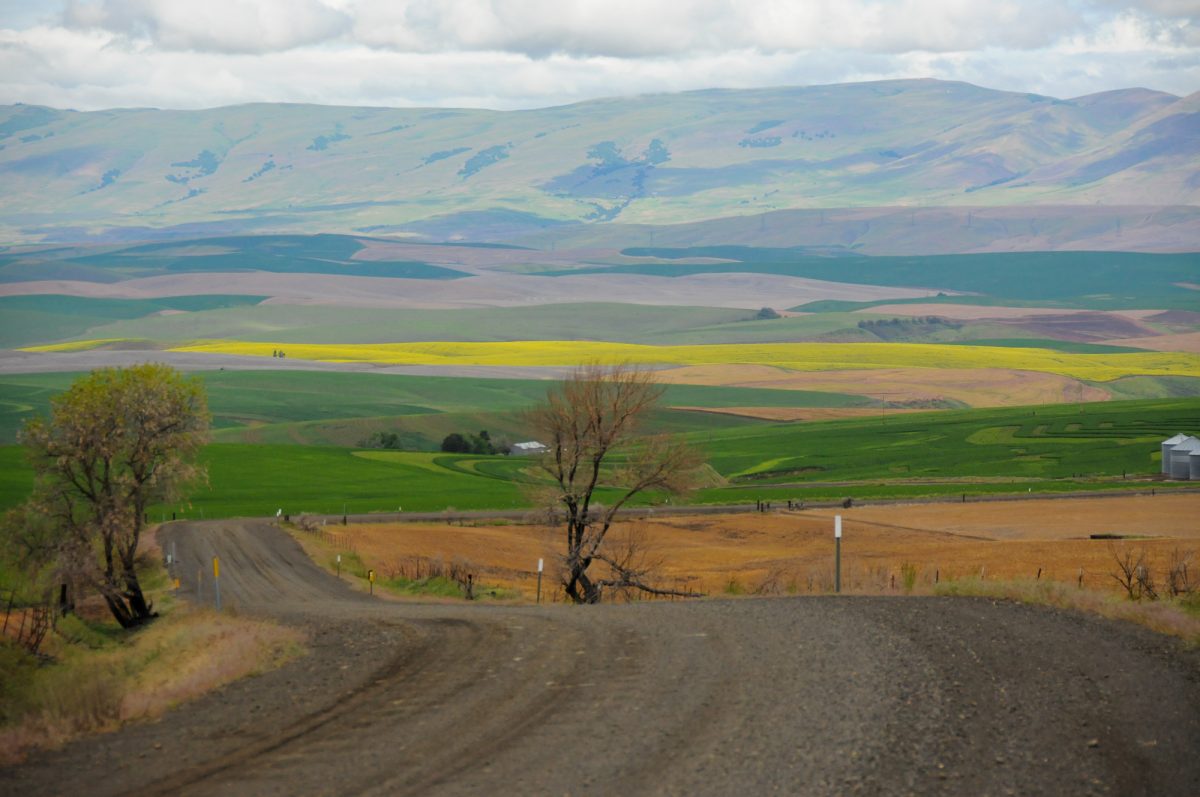
(Photos: J. Maus/BikePortland)
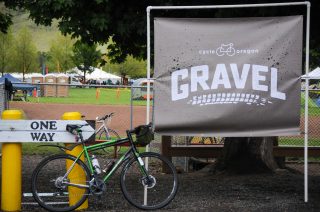
With its second year in the books, it feels like the Gravel event has found a home with Cycle Oregon. After three decades of their signature, 7-day “Classic” event, the nonprofit has found a sweet spot around one of cycling biggest trends: riding unpaved backroads, a.k.a. gravel grinding.
The tiny eastern Oregon town of Dufur (est. 1893, pop. 604) was home base for two full days of riding. The routes traversed land where the Molalla Tribe lived for generations before being banished to a reservation by the U.S. government in 1851. Today the land around Dufur is wide open country dotted by farms that raise livestock, wheat, and other crops.
After riding the Sasquatch Duro in Oakridge on Saturday, I opted to come home via Dufur so I could check out day two of the Gravel event. I showed up Saturday night just when the excellent band Greater Kind (brought in from Portland) fired up their instruments.
The vibe was classic Cycle Oregon, only on a much smaller, more intimate scale. The week-long ride is like a small city with about 2,500 people buzzing around in every direction. You could know someone on that ride and not see them for the entire week. But at Gravel, the crowd is much smaller. You could almost see everyone with a quick glance around.
When I got there, the free beer and wine were flowing and a big crowd had formed around the “Whiskey Wagon,” a booze cart wheeled in from north Portland. This mobile bar was serving two very popular items: distilled beverages and a live feed of the Portland Trail Blazers playoff game.
Advertisement
While tempted to party all night, tired legs from day one (everyone talked about how tough it was) encouraged most campers to their tents at a sensible hour. There was another big day of riding just a few hours away.
The land between Highway 197 and the Deschutes River was made for cycling on. The roads, paved or unpaved, follow the organic undulations of the round hills and valleys. And the views go for miles. When it comes to the gravel rating, this area falls squarely into the luxury category. But on Sunday, a smattering of rain showers downgraded that rating — or upgraded it if you like getting dirty.
About half way through the 63-mile long course, Roberts Market Road turned into a mix of wet sand and slick peanut-butter mud. It lasted for only a mile or two, just long enough to completely cover the bottom half of bodies and bikes (unless you had fenders of course). But no one was looking down because the sun eventually punched through the clouds and the views were magnificent. Crop colors popped as the wide and empty roads unfolded in front of us.
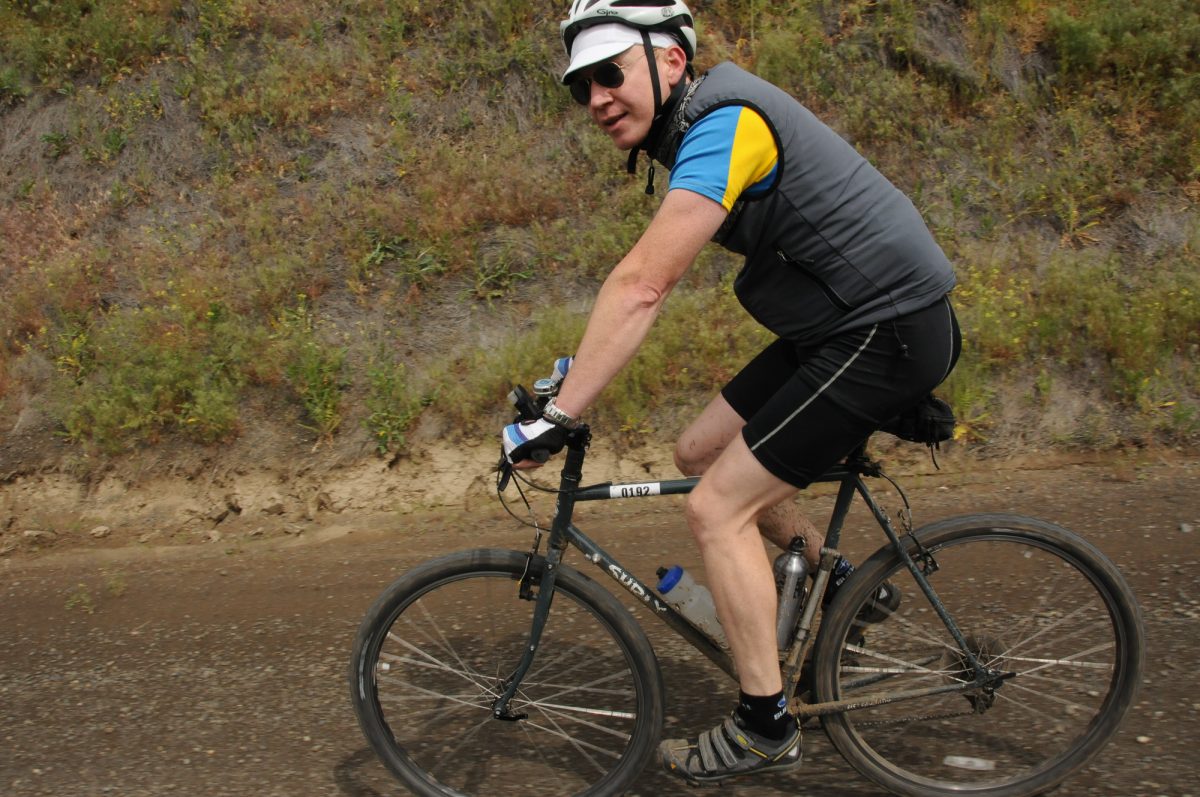
It was a great day in the saddle. With their gentle grades, rewarding vistas, and nearly carfree solitude, the roads around Dufur offer quintessential Oregon conditions, whether you’re a gravel connoisseur or just trying it for the first time. And many Gravel participants were doing just that. Several people I talked to were yet to buy a “gravel bike”, they simply grabbed something with tough tires and decided to see what all the fuss was about. I’m pretty sure they’re hooked.
— Jonathan Maus: (503) 706-8804, @jonathan_maus on Twitter and jonathan@bikeportland.org
Never miss a story. Sign-up for the daily BP Headlines email.
BikePortland needs your support.


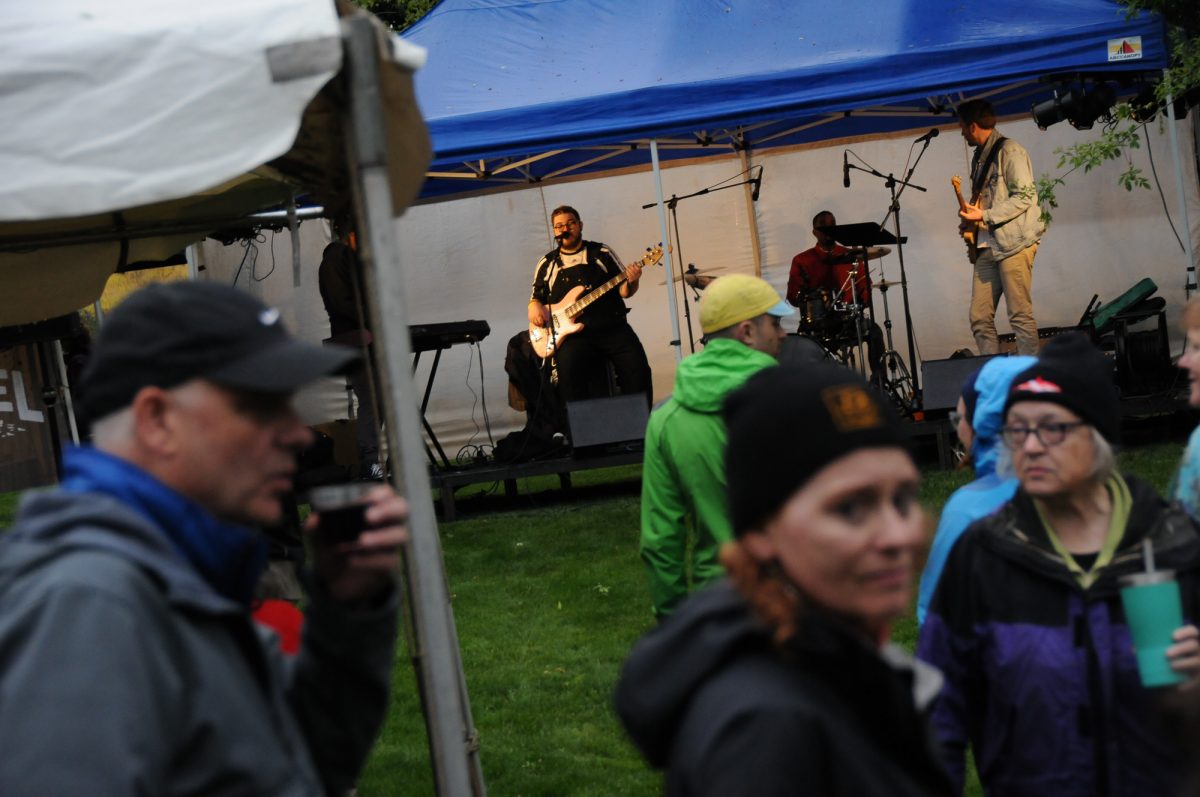
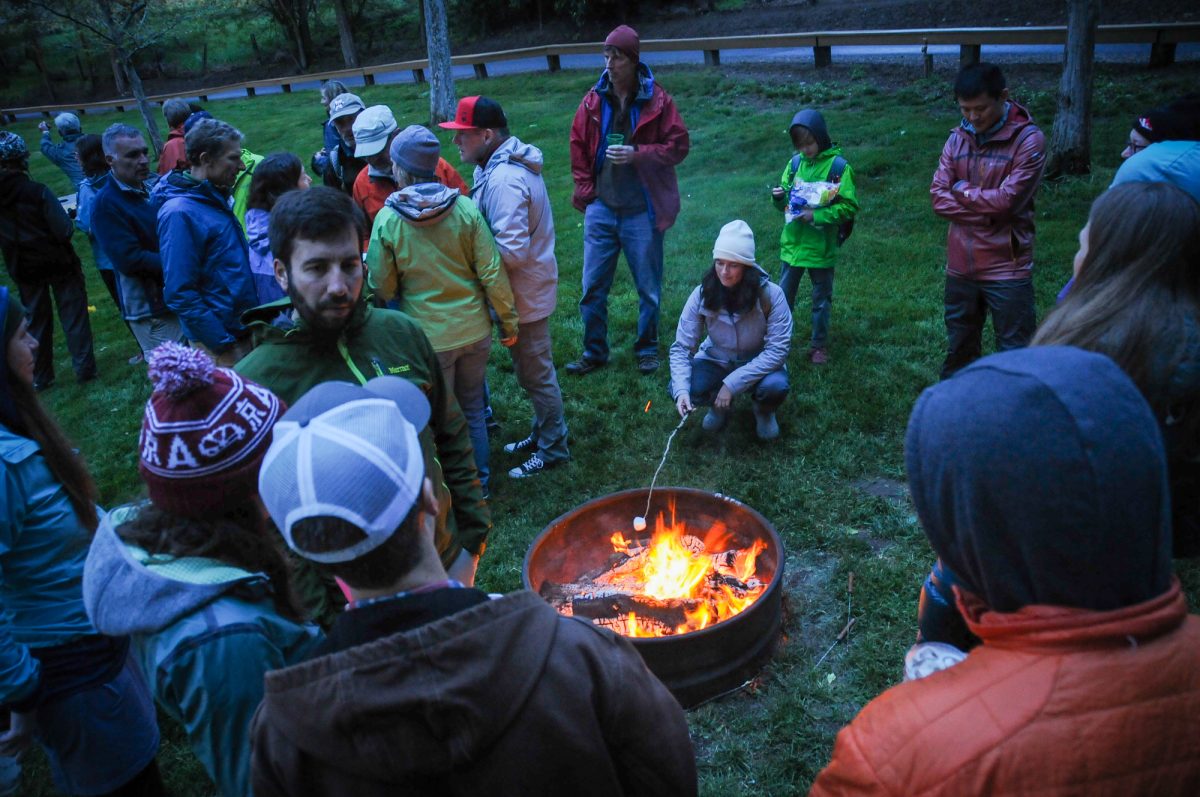


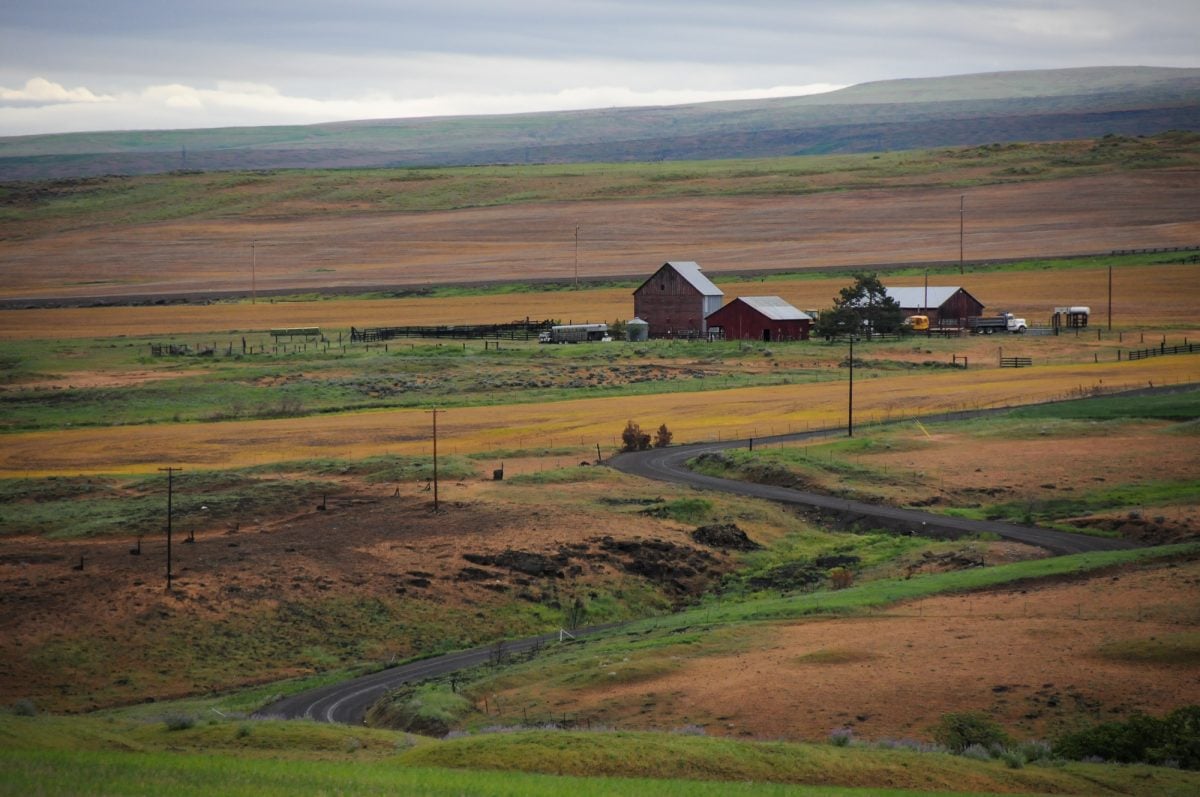
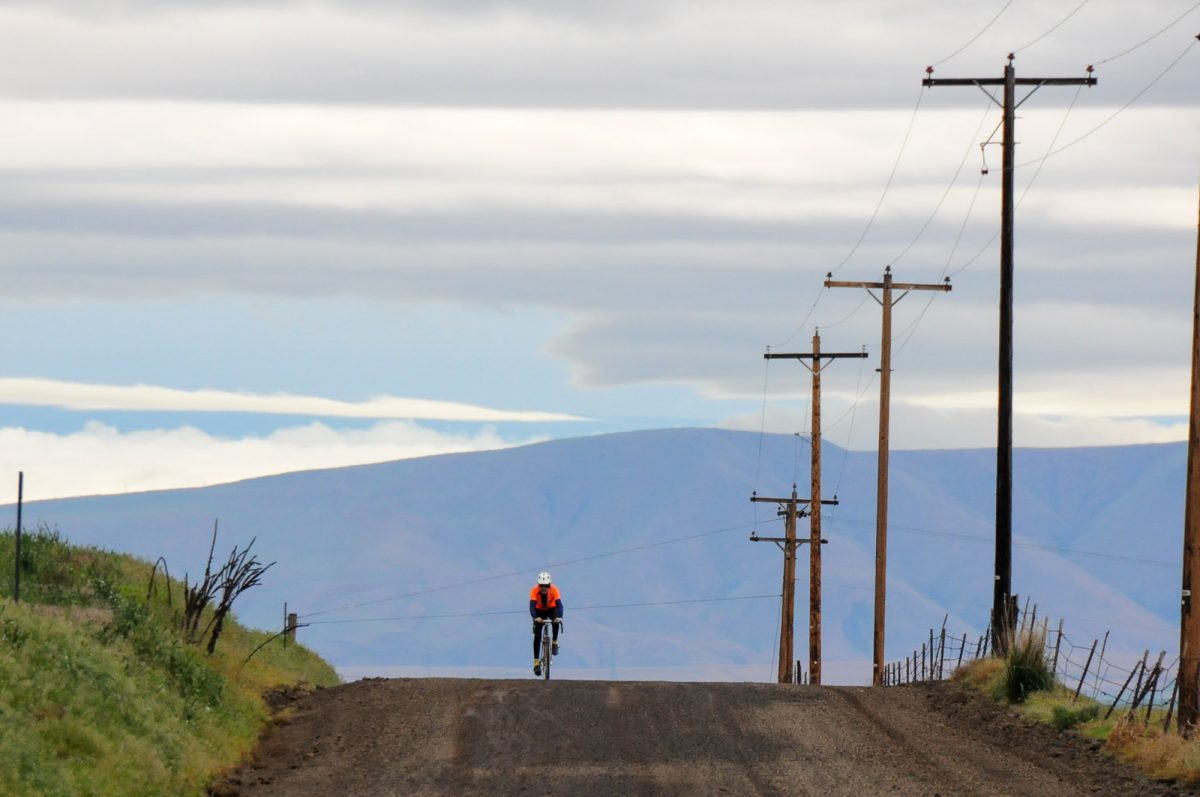

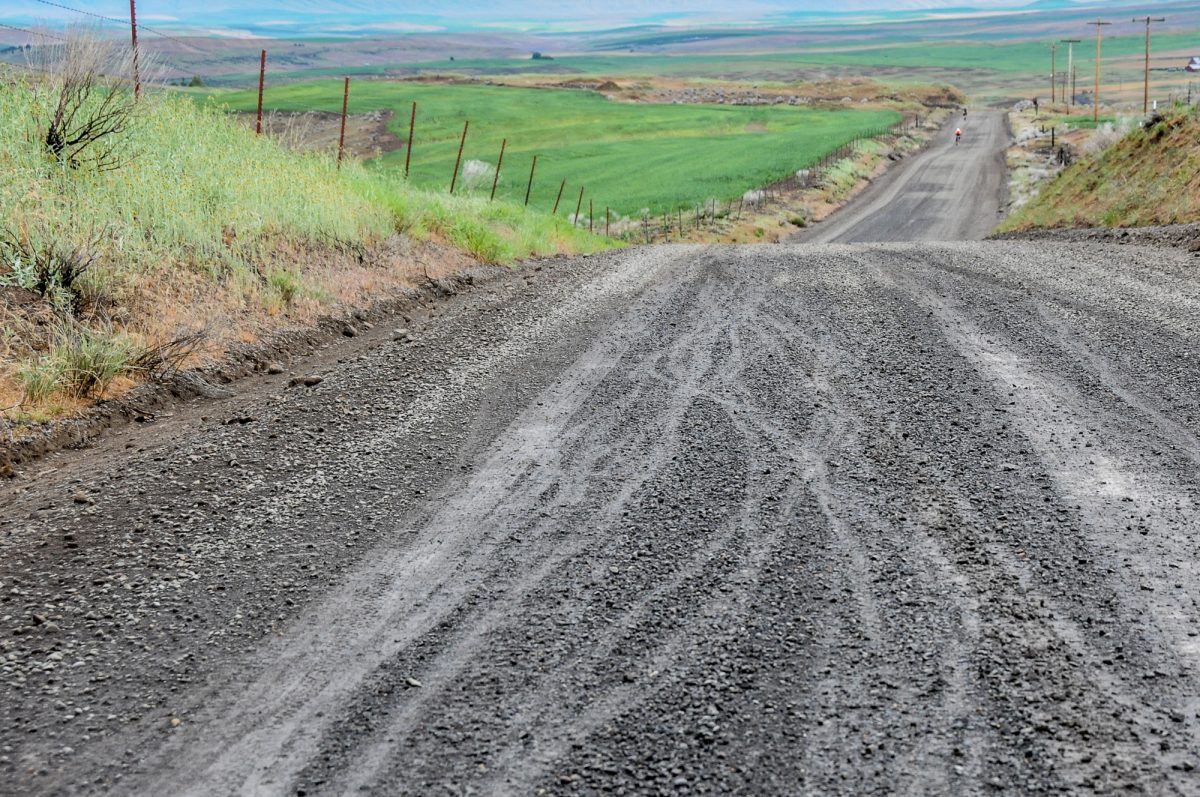
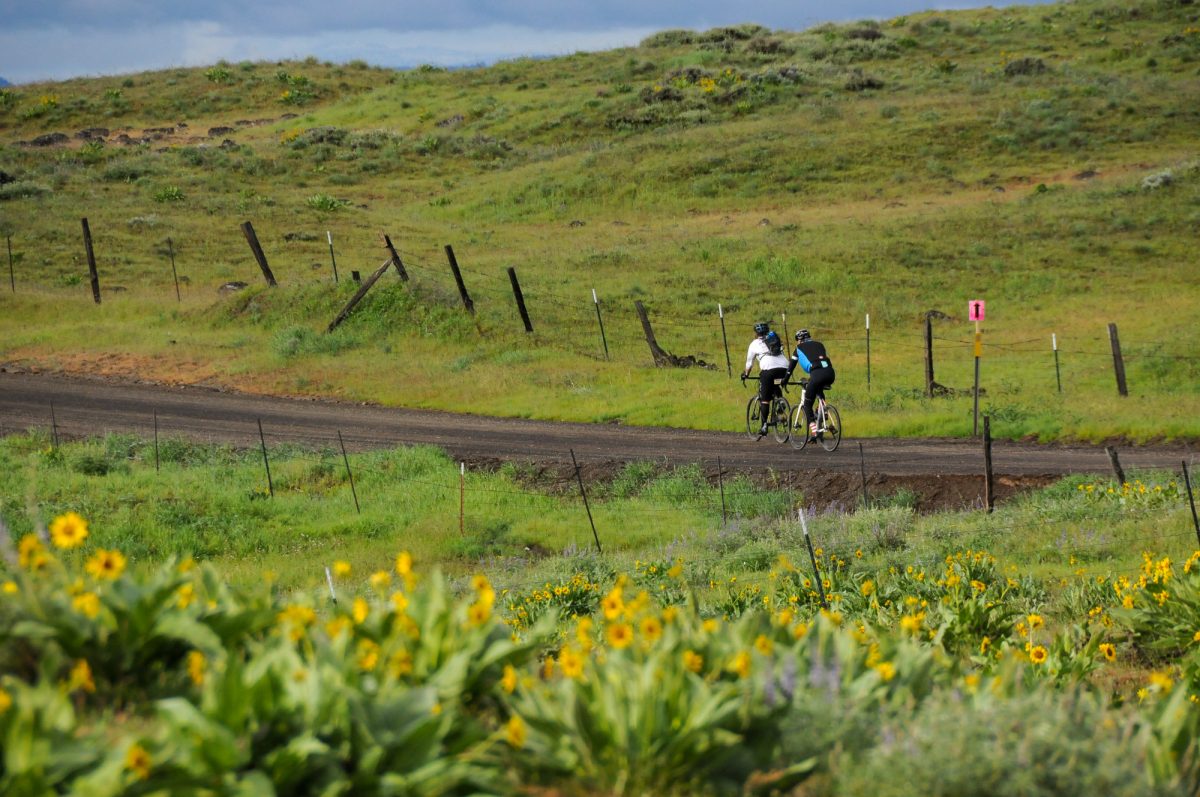
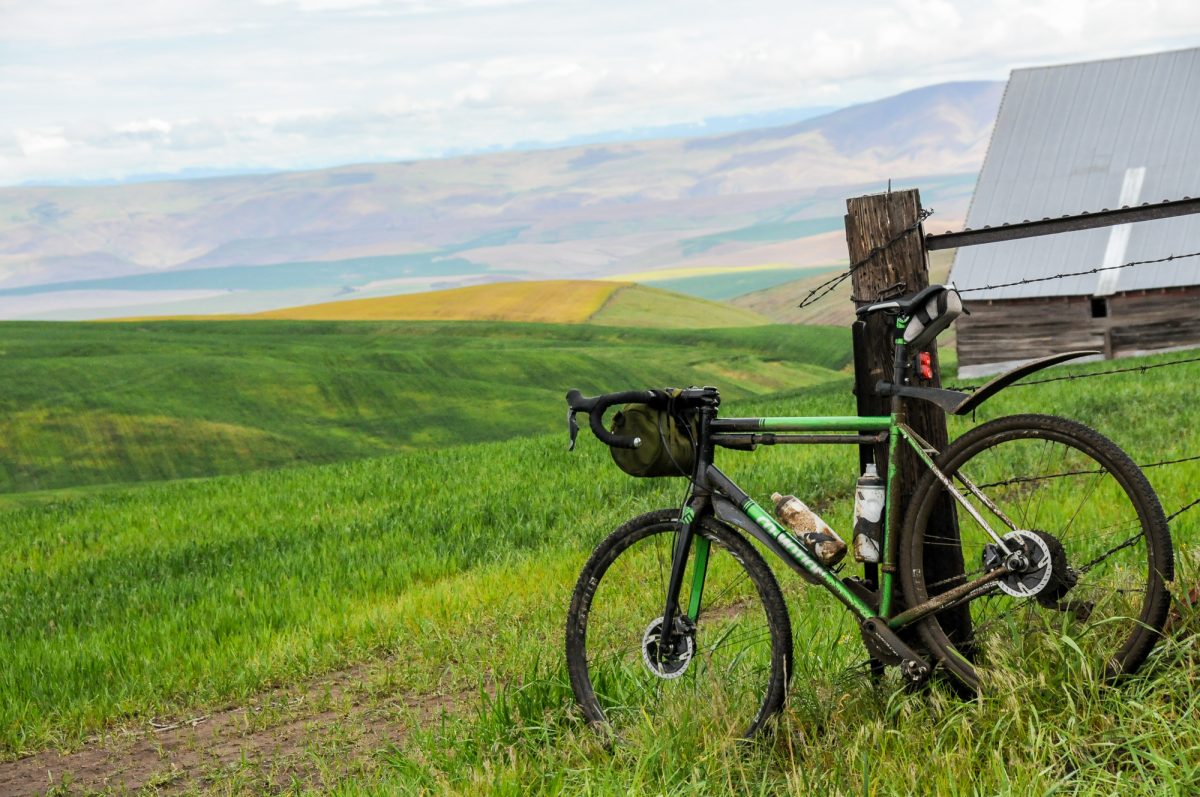

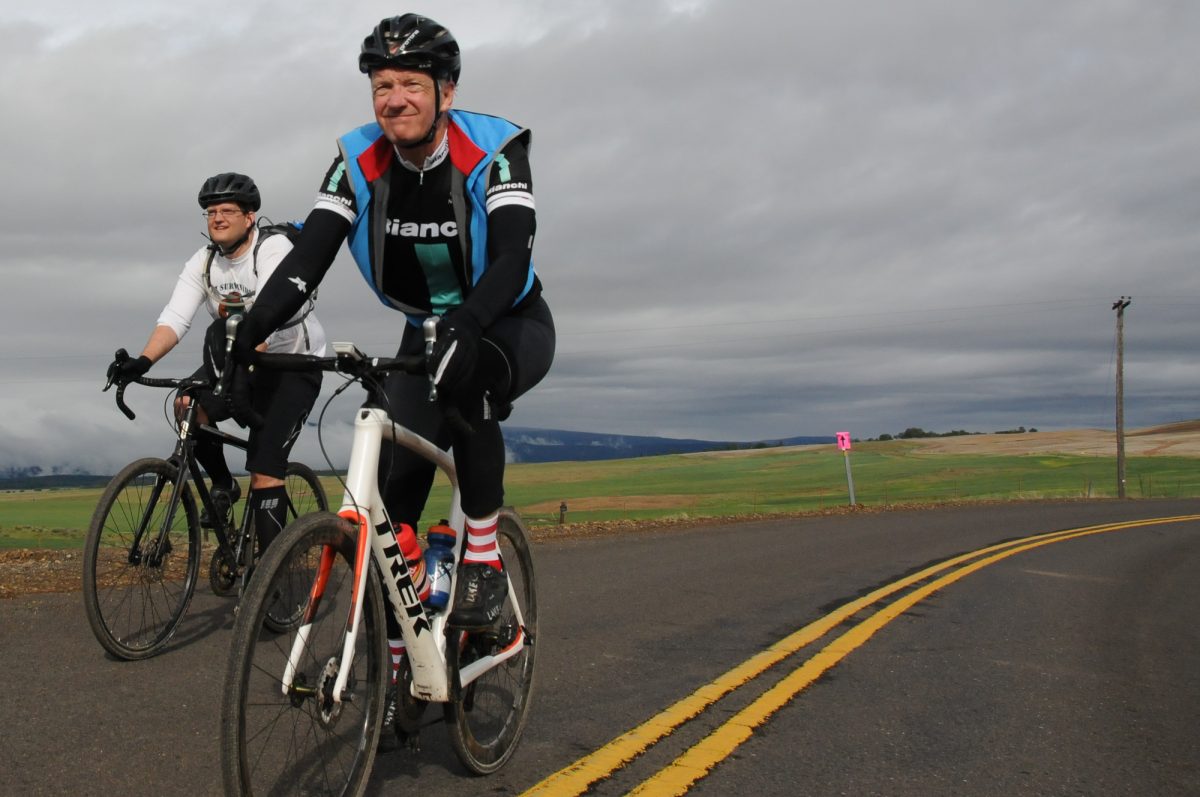






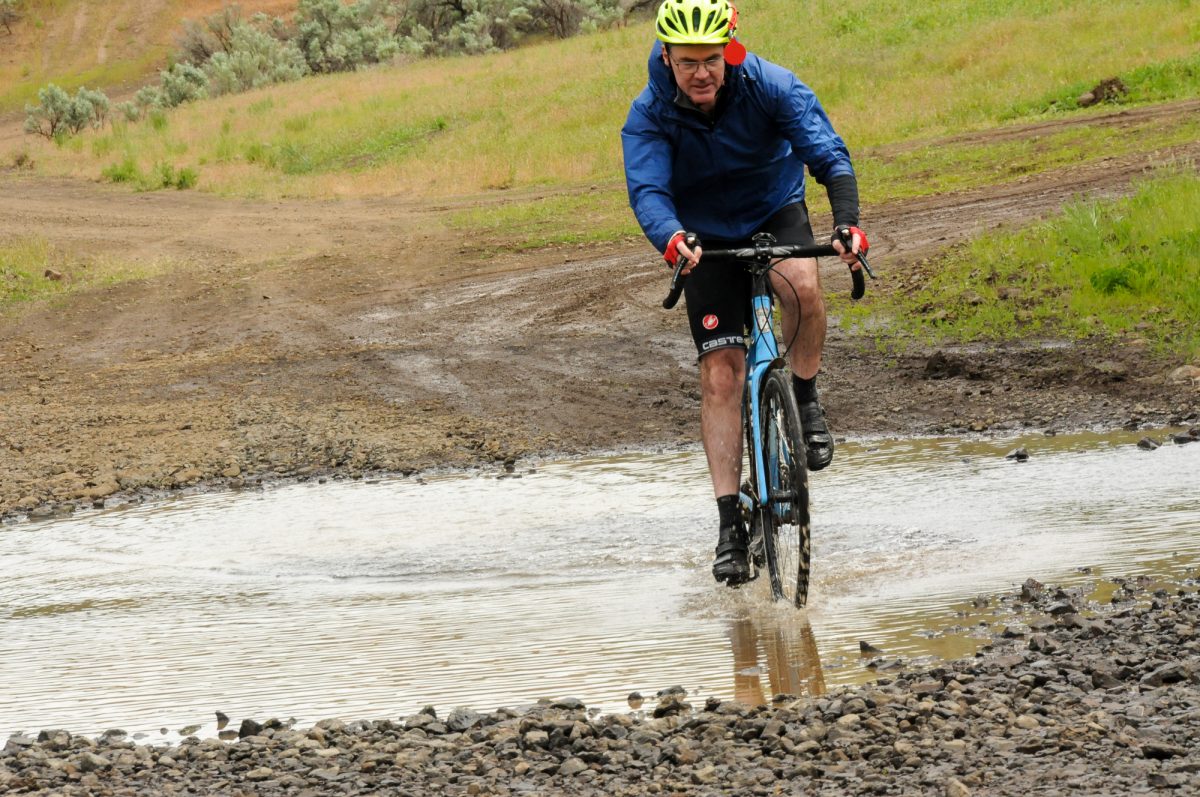
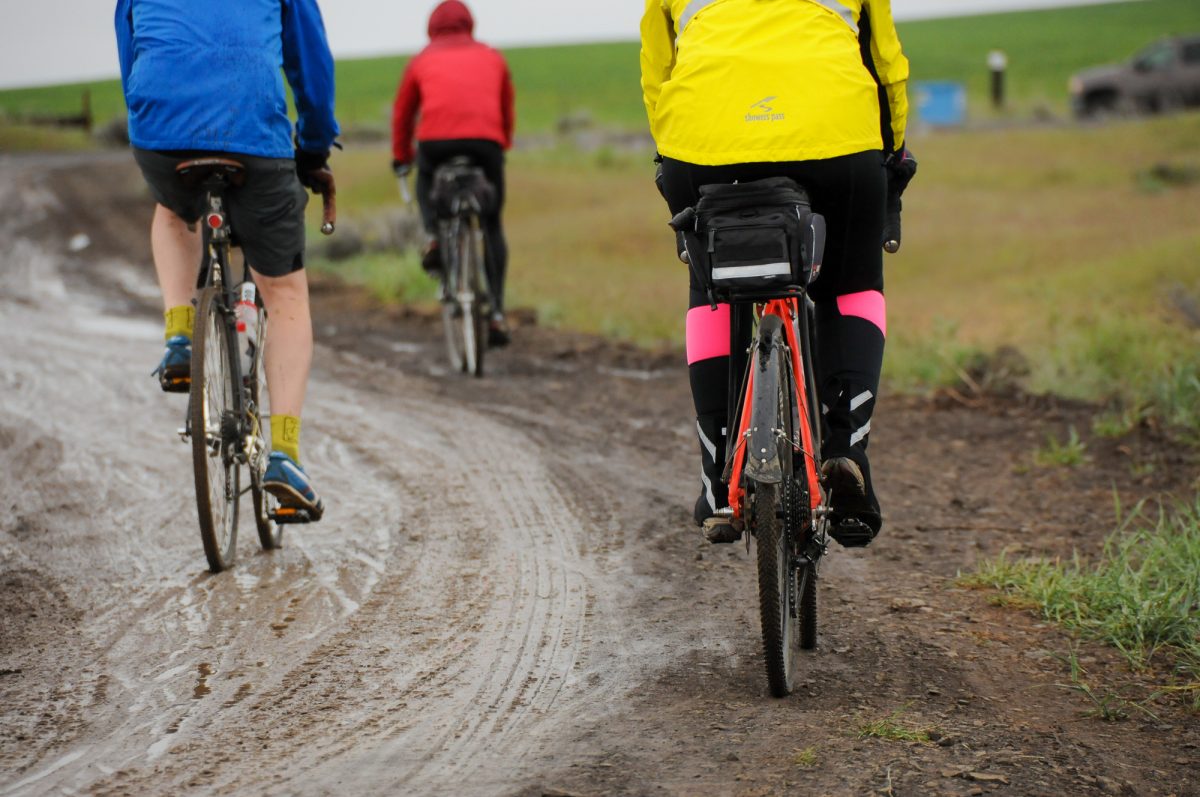
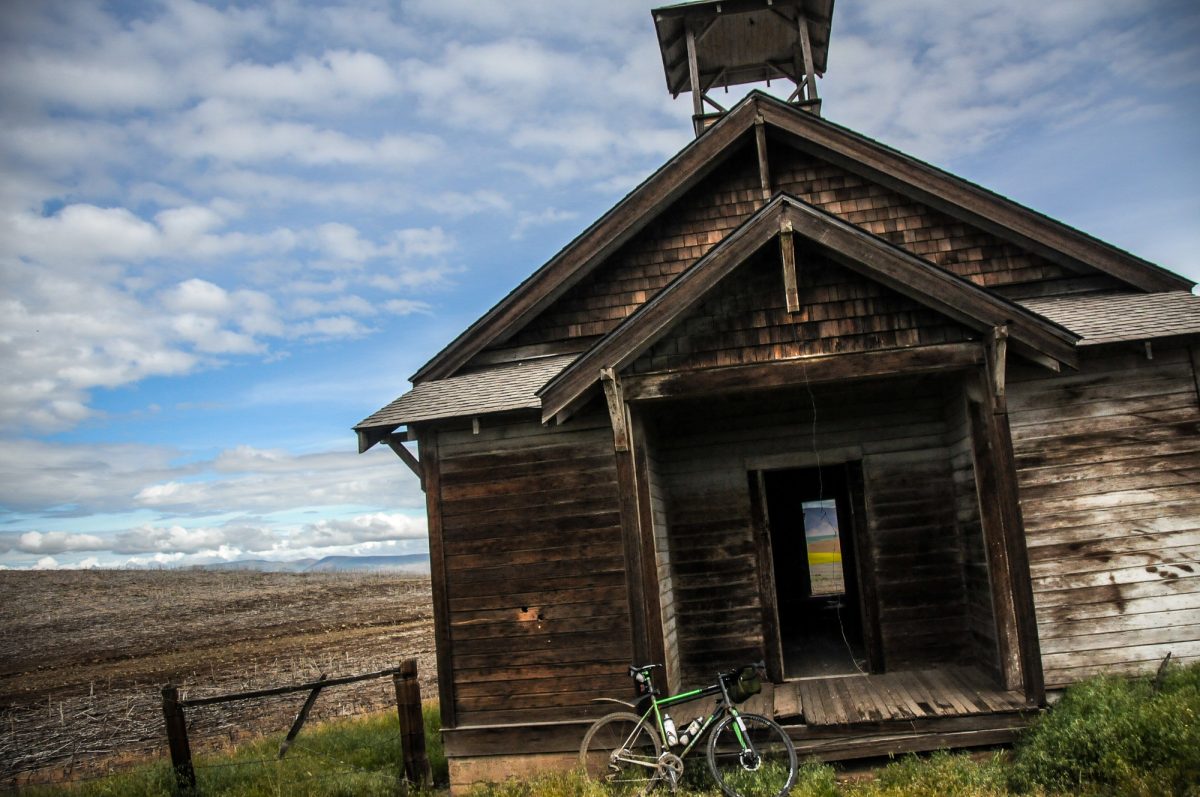

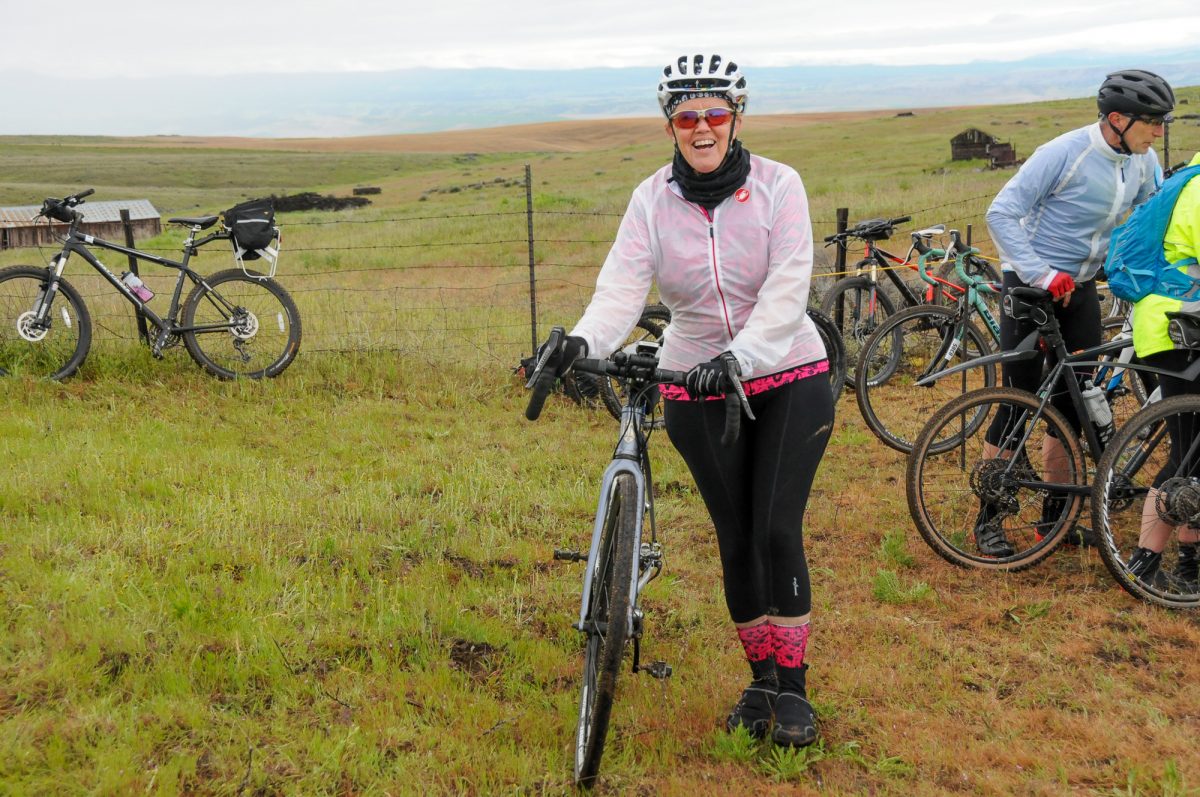
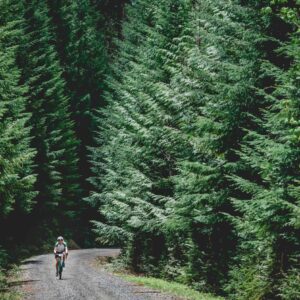

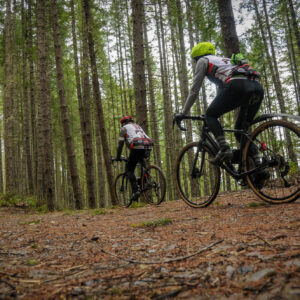
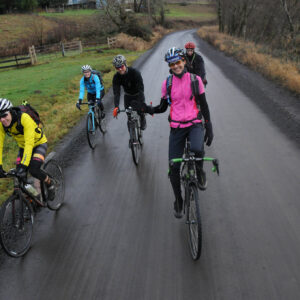
Thanks for reading.
BikePortland has served this community with independent community journalism since 2005. We rely on subscriptions from readers like you to survive. Your financial support is vital in keeping this valuable resource alive and well.
Please subscribe today to strengthen and expand our work.
Are road bike tires a good choice for this type of riding, or were people going with a wider mountain bike tire?
It really depends on the rider and how comfortable/fast you want to go. That being said, I didn’t see any standard road bike tires. There were lots of MTBs and bigger tires for sure. It’s hard to enjoy the gravel downhills w skinny tires and having larger ones allows for a more cushy ride and less chance of pinch flats.
I’ve added a few more photos of the bikes and tires people used. Check out the images and you’ll see a wide variety of bikes!
Cycling journalist Caley Fretz just wrote a pretty good article on basic rules of thumb for selecting tires depending on pavement/dirt ratio, rider comfort and toughness of the off-road terrain.
https://cyclingtips.com/2019/05/the-basics-of-gravel-racing-choosing-the-right-tires/
The CyclingTips tire-width “advice” referenced by Jason H is useful only if you’re one of the folks (and I know from past experience on gravel rides there are many) who treat a ride like this as a race.
To his credit he at least acknowledges that the large number of people who ride gravel for the fun of the ride exist, but then he goes on to offer absolutely no advice on tire-width selection for those people.
In the video, Caley specifically says he did the Wild Horse Gravel ride at the back at a leisurely pace, and the notes do give specific advice on how to adjust the “formula” for things like intended speed and experience on loose terrain(he suggests an extra 2-3mm for novice or easier going riders). Not to mention his coinage of gravel events as “mullet rides – business at the front, party at the back” is great and really captures that UNLIKE serious roadie event, there is room at these events for a large range of participant types. You could boil the article down to these two paragraphs and get 90% of the gist of it
This generally lines up with my own experience riding 50/50 getting to and from nearby farm and rural hills gravel roads from downtown Hillsboro and not being either super quick or confident. 38mm Gravel King SKs setup tubeless have served me well and are neither sketchy off road or too slow on road. I take a mini pump always and find adjusting pressure for surface during the ride can make a bigger difference than actual width.
Extra 2-3mm. Hahahaha.
My minimum is 50mm (at 80 psi), even on pavement. Depending on the gravel, anywhere from 50-56mm for me.
My wife has done a lot of cyclocross in the past but chose to ride her 29er mountain bike since she was not in a hurry. The 29×2.2 tires and front suspension was very comfortable. She really enjoyed the ride.
Not too hard to find tires in the 2″ range that are plenty fast for a ride like this. Not to mention less puncture-prone on the rougher gravel, and also more comfort. I can actually do a 50 mile gravel ride in less time on 50mm (2″ tires) than on 32mm tires, because on the latter I’m feeling beat-up by the end, and that makes me slower.
Panaracer Gravel Kings!
Really wish I could have made it to this one. I’ve done a fair bit of riding out in Wasco County, including some of the same roads. Beautiful country, and one of my favorite places to ride. I love me them big rolling hills.
And pro tip for anyone doing solo or small-group rides out there: eventually you WILL get chased by a dog or two. Has happened to me several times. Be prepared, but also know that Wasco has a leash law and you can report the miscreant owner. On the only occasion I bothered reporting, I had a showdown with a pit bull. By some miracle I met upon a Sheriff’s deputy a few minutes later, and it was edifying to see that (as you might not always expect in a rural county) he took my report quite seriously.
A lot more people attended than I thought would – but it never felt crowded. I’d certainly do that event again. CO always has those “little details” figured out for just about everything – an incredbly well run enterprise. And you always meet some interesting folks.
I’m curious to know why every ride report in Portland is not also prefaced with white colonizing back story. Might add important context to Ladd’s Circle or protected bike lane advocacy.
Can’t tell if that is sarcasm or not.
If it isn’t…I would say maybe some people just want to ride their bikes for fun and don’t really care.
To me, it just feels right to acknowledge these truths about where we ride. I can no longer simply think about the pretty views and the awesome roads without also thinking about the people who used to call them home and the role that my descendants played in pushing them off the land. That doesn’t mean I can’t enjoy my experience. It just means I’m cognizant that there’s more to these places than simply being cycling playgrounds. And I feel a responsibility to share those feelings when I do these reports. This is something I’ve been thinking a lot about recently and I’m happy to hear feedback.
I’m curious if your ancestors had any actual role in taking the land, or if you were speaking more broadly, feeling some guilt for what other people unrelated to you may have done.
Not that I know of Hello, Kitty. I’m just pointing out what I think is an important and too often overlooked feature of the places we ride through.
Awareness doesn’t have to automatically equal guilt.
This is totally true — almost every American knows that Europeans displaced natives, often with some level of brutality or trickery, and most would acknowledge that, by today’s standards, it was a horrible history. Yet most Americans feel no personal remorse for what happened. In fact, many of us stand by even as other displacements are playing out elsewhere in the world, often with shocking levels of brutality. We are even sometimes willing to financially incentivize them (example: when was the last time you consumed palm oil? Or bought a cellphone?)
So I agree, awareness does not imply guilt, or even an obligation to deprive oneself of yummy yummy Newman’s Os.
The intentional displacement of indigenous people by the federal and state governments in what is now the United States was decried by many at the time as inhumane and unjust. These acts were acknowledged to be terrible by standards that were contemporary art the time. You speak as if humans just learned the difference between right and wrong in the 1960s.
Humans have been wrestling with right and wrong, ends vs means, an all the other intertwined concepts for as long as there has been a humanity, and our thinking still continues to evolve. None of these were concepts invented in the 1960s.
And whatever tribe that occupied the space that you do did so by conquering, slaughtering and displacing whatever tribe that lived their prior to them, who did the same thing to the tribe that was there prior to them. Conquest is not some uniquely white European phenomenon. It was a human universal up until the last half century or so. Every single person alive on this planet lives where they do because their ancestors pushed out some other group. The same thing can be said for animals and plants. I’m not going to loose any sleep over it.
This social justice shit is getting kind of tiresome, dude. You shouldn’t make the assumption that every person who rides a bike in the Portland metro area shares your opinion on the subject. But of course, journalism is the only profession where one can routinely talk down and condescend to their target audience and still stay afloat financially. We’ll see how long that lasts. If there was a Portland blog that stuck to the bike news, I’d read it instead. Enjoy your monopoly.
Thanks for sharing chris. I’m glad to know where you stand on this. Sorry you felt like my words were condescending.
So normally I’d be all over this with that notion because I’m not super big on the Social Justice stuff…but JM simply stated one sentence about the history of the area without any other context.
However, you seem to be injecting your own emotional reaction to that literal statement and it wasn’t a social justice statement.
Thanks for the cultural reference. I do think its relevant to know about the peoples that called these lands home. Its history.
Hi Bradley, Glad you noticed that. It’s something I think about more and plan to incorporate into all of my work. I’m more motivated than ever to do this because of what I’ve read from Erin Monahan of Terra Incognita Media. She writes about racism and ongoing impacts of colonization in the outdoor industry specifically (she also happens to live in Portland).
As a journalism consumer, I find the references tiresome, oft-putting, and mostly irrelevant to the topic at hand. Just some feedback for you. I mostly just click off when the writer uses his/her platform to inject relatively irrelevant ‘political’ commentary into unrelated topics. and, no I am not putting my head in the sand, I just choose to pick when and where I read my politics.
I hear you Steve. I disagree that it’s irrelevant though. I mean, I’m not writing about cooking or music. We are literally riding through lands where these tribes used to live. To me, it’s not “unrelated political commentary”… It’s actually interesting information to know. It’s similar to how I feel people should understand the history of black culture on North Williams Avenue and when I write about that it’s certainly not unrelated to our current experience of biking on that street. Thanks.
I agree that the history of a place is interesting and enriching. Personally, I’d like to hear more about what happened before and after the land was “settled.” Tell us more about the people who have lived in a place for the past 150 years, and maybe something about those who came before those who lived on the land when Europeans arrived. Focusing on one particular moment in history doesn’t really give a full sense for a place.
To add a little more context, when I visited Peru, I focused on the Spanish conquest of the Incas. It was only later that I realize the Incan “interactions” with their neighbors in pre-Spanish times were very interesting, and Peruvian history since the country’s founding was also quite rich and interesting.
By focusing on that one headline moment, I devalued everything else, and it gave me a distorted view of Peruvian history and who Peruvians are. I regret the error.
I’m reading about the Inka right now in a book titled 1491 (Charles C. Mann). It’s fascinating history that would give Game of Thrones a run for its money in terms of intrafamilial violence. My lord.
That’s helpful feedback. I’d love to write more about that! Keep in mind however, that history is not the focus of the story. This is mainly a ride recap, not a narrative of the place over time. I don’t have the room or the inclination to go too deep into the history in this situation.
Just deep enough to shame people for the color of their skin..
OMG you felt shame, your life is so hard.
lol’ing at everyone feeling guilty or shamed by basic history. Jonathan spent one sentence noting the history of a place… I appreciated it and as a white male wasn’t immediately triggered and defensive about it. May be a personal thing some folks need to sort out instead of whining that an internet blog shelter them from.
Why did y’all feel shame?
I think there are a couple of good options to handle ‘asides’ about history or ‘political’ angles. The writer can add a sidebar, which focuses on the non-cycling issues or a separate paragraph with italicized header. That focuses the reader on this aspect and/or allows grumps like me to skip it.
This is starting to become parody… Seriously, a tiny history lesson amounts to this????
I agree that this data point about this area was interesting– enough so to me that I clicked the link to find out more about the local tribe.
I’ve done a lot of different events in this area over the last decade and a half and can’t say that I new about the local tribe at all. I appreciate the info.
I didn’t find the mention of white settlement in this area to be off-putting– without the white man’s interference, the Columbia River Gorge would look a lot different, starting with the Dalles Dam and how the dam systems have reshaped the landscape in dramatic ways.
Agreed. The history is totally relevant! (Another interesting bit of history/ecology/economics would be to ask and answer “why are there such good roads out here, and so few people?”
I think you’re getting your fair share of news and discussion as a non-contributing journalism consumer. Enjoy the free read!
I’m in agreement with you on this. Sometimes we heard a word or a phrase and it sets us off on a thought process (fraught with our own biases, etc.). It was just a phrase and said nothing of “white guilt” or anything like that. Obviously no way of knowing if it was intended to signify that…so simply take it literally.
I actually appreciate the historical context Jonathan and feel it’s correct to note the related effects of those events on the cultures and the landscapes we ride through. I’d just want the context to be driven by more than just social justice concerns and take a wider perspective.
I’ve always found the depth of history to be fascinating, and as I think of where to ride throughout the westside I often research the history and changes to the area to increase my “enjoyment” of riding through it. I quote enjoyment because sometimes it is to be amazed to see historical things, but also to reflect on not so pleasant things that have taken place as well.
Riding past Jackson Bottom Wetlands or the remnants of Wapato Lake near Gaston I think of the hundreds of Atfalati Kalapuya tribal members who once wintered in these places, and what it would have looked like to see their campsites and fires dotted all across the valley before they were nearly wiped out by disease brought by settlers. Yet I find it just as interesting that when you roll down SW Kinnaman St. in Aloha you are literally following the route of the 1840’s Oregon City – Lafayette wagon road where settlers neared the end of a monumental cross-continent journey to reach their 320 acre donation land claim, “empty” only because of the previous events.
Or even how new roads can have historical context. Ride north on the new Century Blvd. in Hillsboro from Evergreen Road and on the right in an open field [for now] across from the historic Shute farmhouse was the location of the Methodist meeting house overlooking Five Oaks, where “Oregon” as territory was first conceived of and where 4 of trapper and pioneer Joseph Meek’s children still lie interred.
I find old maps can be just as informative for route planning as the newest digital ones. I love the free USGS ones at http://historicalmaps.arcgis.com/usgs/ You can use these to see how a surprising number of the roads you ride have been there for a century or more, and later how major changes like highway 26 being built in the 1940’s interrupted the old layout of roads as well. Leaving obviously formerly connected bits of road on either side. I wonder what it must have looked like to intrepid early cyclists around the turn of the 20th century.
That got long fast, but basically I’d love to continue hearing about the history of the land we ride through and think on a bicycle going quietly and at a relatively slow pace we can appreciate it much more than a lot of others can. Id’d just like to hear about it all, the good, the bad and all perspectives related to it.
This is exactly the sort of richer, more textured context I would like to see, and which I was referring to above.
Thank you Jason! I’m so glad to hear you are interested about this. I’ve been wanting to do a “Where we ride” series of stories that does exactly this… Go deeper into the cultural history around popular cycling routes, from local neighborhoods to rural areas. Sounds like you’ve thought a lot about this too. Very cool. I had no idea about those historical notes you mention. So interesting! If you’d like to write up a post about it, or just flesh out a few paragraphs and take a few pics, I’d love to publish something. maus.jonathan@gmail.com. Be in touch.
HI Jonathan, Yes! As as I was writing those anecdotes I was actually thinking there is enough cultural history around the roads and landscapes we ride thought to create a whole series. I’ll be in touch shortly for sure.
One correction for anybody wanting to actually check out the places I was talking about, the new road the former Methodist meeting house was located off of is actually NE Starr/41st Ave. about 1/4 north of Evergreen Rd. not Century Blvd. Apologies for any confusion. Here is some more info on the site, and how it may be lost to development. If you want to see it as the open fields it was originally, go soon!
https://www.tualatinvalleytales.com/stories/2018/10/7/methodist-meeting-house-historical-site
Assuming you are from Portland shouldn’t you already be educated about the history of where you live? It’s reasonable to include some additional background like this when profiling an area many people may not know much about.
I think its great to learn a little bit of the history of the area you visit. Stop projecting FUD, please.
Just relax and enjoy the post.
The fun band in your photos is greaterkind (https://www.facebook.com/greaterkind/) out of Portland! And yes- they were awesome!
Thanks Amy! Added that to the story. And nice chatting with you Saturday night.
I’ve been on so many chundery fire roads full of babyheads that I’d always go with an XC hardtail as my gravel bike over a designated “gravel bike”. “Gravel” isn’t all pea gravel.
Wow, somehow I’ve managed never to see that country in springtime. It comes in colors everywhere. It’s like a rainbow. By summer everything’s either cultivated and therefore green, or else it’s tan.
Goatheads (puncturevine) are becoming more common along these roads. Google the plant and watch out for them. They spread out along road edges. I’ve even noticed a few along some roads in the Willamette Valley. Used to see them only in far eastern parts of the state.
In my experience you can encounter goat heads anywhere in Oregon east of the Cascades and below 2000-3000′. Admittedly I’ve never seen them on the westside though.